Text
#desighiza#recipes#calories#chicken#food#foodie#biryani#drumsticks#brownie#sweets#so yummy#tasty#photography#london#europe#auspol#australia#america#india#pakistan#china#todaynews#girlblogging#boys
1 note
·
View note
Text
How Long to Cook Hot Dogs in Air Fryer

Introduction
How long to cook hot dogs in air fryer? Indulge in the ultimate culinary experience as we unravel the secrets of cooking hot dogs to perfection using your air fryer. Get ready for a flavor-packed journey that will redefine your hot dog game.
The Art of Air Frying Hot Dogs
1. Setting the Stage: Begin by preheating your air fryer to the optimum temperature. This step ensures an even cook, preserving the juiciness of the hot dogs while achieving that desirable crispiness.
2. Choosing the Right Dogs: Selecting quality hot dogs is crucial. Opt for your favorite brand or explore artisanal options for an elevated taste experience. Quality ingredients lay the foundation for a delectable dish.
3. Prep for Success: Before placing the hot dogs in the air fryer, lightly score them. This not only enhances the presentation but also allows the flavors to penetrate, ensuring a more flavorful bite.
The Cooking Process
4. Perfect Timing: Cooking time is key. Aim for a balance between a crispy exterior and a juicy interior. Typically, 6-8 minutes at the right temperature will yield the ideal hot dog. Adjust according to your desired level of crispiness.
5. Midway Flipping: For an even cook, flip the hot dogs midway through the air frying process. This simple step guarantees uniform texture and flavor, elevating your hot dog experience.

Serving Suggestions
6. Creative Toppings: Experiment with a variety of toppings to elevate your hot dog game. From classic mustard and ketchup to gourmet options like caramelized onions or jalapeño relish, the choices are endless.
7. Pairing Perfection: Pair your air-fried hot dogs with complementary sides. Whether it's crispy fries, a vibrant coleslaw, or a refreshing salad, the right pairing enhances the overall dining experience.
Conclusion: How Long to Cook Hot Dogs in Air Fryer
In conclusion, air frying hot dogs is a culinary delight that combines convenience with exceptional flavor. Elevate your hot dog experience by following our guide, and embark on a journey of taste and texture that will leave your taste buds wanting more.
FAQs
Q1: Can I use frozen hot dogs in the air fryer? Absolutely! Adjust the cooking time slightly, giving frozen hot dogs a few extra minutes to ensure thorough cooking.
Q2: What's the recommended temperature for air frying hot dogs? Preheat your air fryer to 375°F (190°C) for the perfect balance of crispiness and juiciness.
Q3: Can I reheat leftover hot dogs in the air fryer? Certainly! Reheat at a lower temperature (around 350°F or 180°C) to prevent overcooking.
Read the full article
0 notes
Text
5 notes
·
View notes
Text
How Long to Cook Hamburger in Air Fryer

Introduction
How long to cook hamburger in air fryer? In the world of cooking, innovation is always on the menu. One such culinary advancement that has taken kitchens by storm is the air fryer. As we strive for healthier and more efficient ways to prepare our favorite dishes, the air fryer has become a go-to appliance for many. In this article, we'll delve into the specifics of cooking everyone's beloved classic—the hamburger—in the air fryer.
The Air Fryer Advantage
1. Quick and Even Cooking
Cooking hamburgers in an air fryer offers the advantage of quick and even cooking. The circulating hot air ensures that your patties are perfectly cooked on all sides, achieving that coveted crispy exterior.
2. Healthier Option
With the air fryer, you can enjoy the delightful taste of a hamburger without the excess oil. The technology allows for a reduced amount of oil or even cooking with no oil at all, making it a healthier alternative to traditional frying methods.
3. Retained Juiciness
While the air fryer is excellent at creating a crispy exterior, it also excels at retaining the juiciness within. Your hamburgers will be moist and flavorful, providing a delightful eating experience.
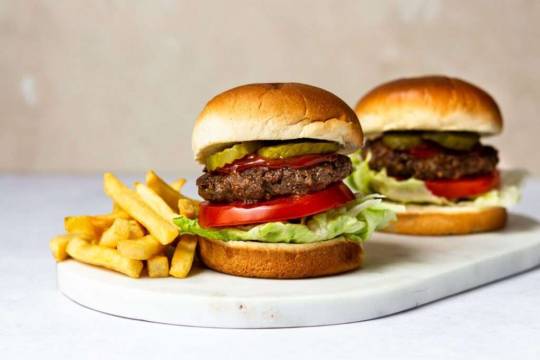
How Long to Cook Hamburger in Air Fryer: Step-by-Step Guide
1. Preheat the Air Fryer
Before you begin, preheat your air fryer to around 375°F (190°C). This ensures that your hamburgers will start cooking immediately, contributing to that crispy texture.
2. Season Your Patties
Take your ground beef and shape it into patties. Season them with your favorite blend of spices. Whether it's a simple salt and pepper mix or a more elaborate seasoning, this step adds a burst of flavor.
3. Place Patties in the Air Fryer Basket
Lay the seasoned patties in a single layer in the air fryer basket, ensuring they don't overlap. This allows the hot air to circulate freely around each patty.
4. Cooking Time
So, how long should you cook your hamburger in the air fryer? Generally, for a medium-cooked hamburger, aim for about 10-12 minutes. For a well-done patty, extend the time to 14-16 minutes. Remember to flip the patties halfway through for even cooking.
5. Check for Doneness
To ensure your hamburgers are cooked to perfection, use a meat thermometer. The internal temperature should reach 160°F (71°C).
6. Let Them Rest
Once done, allow your hamburgers to rest for a few minutes. This helps the juices redistribute throughout the meat, keeping it succulent.
Conclusion: How Long to Cook Hamburger in Air Fryer
In conclusion, the air fryer is a game-changer for hamburger enthusiasts. It brings together the best of both worlds—crispy exteriors and juicy interiors—without the guilt of excessive oil. Experiment with different seasonings and toppings to tailor your air-fried hamburgers to your taste.
FAQs
Q1: Can I cook frozen hamburgers in the air fryer?
Yes, you can. Increase the cooking time by a few minutes, and always check the internal temperature to ensure they are fully cooked.
Q2: What other foods can I cook in the air fryer?
The air fryer is versatile and can cook a variety of foods, including chicken wings, fries, vegetables, and even desserts.
Q3: Are air-fried hamburgers as tasty as traditionally cooked ones?
Absolutely! Many people find air-fried hamburgers equally delicious, if not more so, due to the perfect balance of crispiness and juiciness.
Read the full article
1 note
·
View note
Text
2 notes
·
View notes
Text
How to Make Homemade Pancakes Without Milk
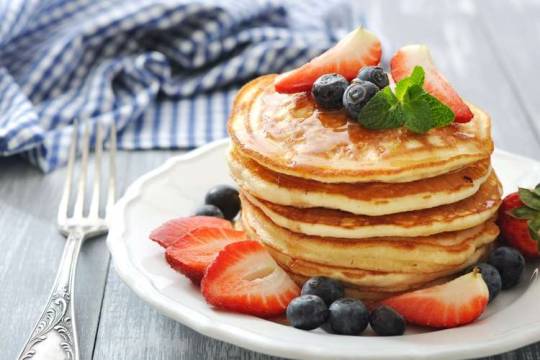
Introduction
This blog post is about how to make homemade pancakes without milk? Delighting your taste buds with homemade pancakes doesn't have to include milk. Whether you're lactose intolerant, vegan, or just out of milk, this guide will walk you through the art of crafting delicious and fluffy pancakes without a drop of dairy.
Understanding the Appeal of Milk-Free Pancakes
Embracing the trend of milk-free pancakes goes beyond dietary restrictions. It caters to a diverse audience, including those pursuing a vegan lifestyle, individuals with lactose intolerance, and anyone looking to explore alternative and healthier recipes.
Essential Ingredients for a Dairy-Free Pancake Extravaganza
Almond Milk, the Perfect Substitute
Almond milk, with its creamy texture and mild flavor, stands out as an excellent replacement for dairy milk in pancake recipes. Rich in nutrients and low in calories, it adds a delightful touch to your batter.
The Magic of Baking Powder
Baking powder becomes your secret weapon for achieving that light and airy texture in the absence of milk. It acts as a leavening agent, creating those coveted bubbles that make pancakes fluffy.
Flaxseed Eggs for Binding
For a vegan twist, flaxseed eggs provide a perfect binding agent. Combine ground flaxseeds with water to create a gooey mixture that mimics the binding properties of traditional eggs.
Vanilla Extract and Sweetener
Enhance the flavor of your milk-free pancakes with a splash of vanilla extract. Choose a sweetener of your preference—maple syrup, agave nectar, or a sugar substitute—to achieve the perfect level of sweetness.

Step-by-Step Guide How to Make Homemade Pancakes Without Milk
1. Prepare the Batter
Begin by combining your dry ingredients—flour, baking powder, and a pinch of salt. In a separate bowl, mix your wet ingredients—almond milk, flaxseed eggs, vanilla extract, and sweetener. Gradually incorporate the wet ingredients into the dry ones, stirring until a smooth batter forms.
2. Heat the Pan
Preheat a non-stick pan over medium heat. To prevent sticking, lightly coat the pan with coconut oil or a cooking spray of your choice.
3. Pour and Flip
Ladle the batter onto the heated pan, forming pancakes of your desired size. Wait for bubbles to appear on the surface before flipping, ensuring both sides cook evenly to a golden perfection.
4. Serve with Style
Once your milk-free pancakes are cooked to perfection, serve them with your favorite toppings. Fresh fruit, nuts, and a drizzle of syrup complement the flavors beautifully.
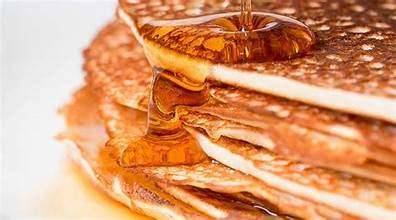
Flavorful Additions for an Extra Oomph
1. Blueberry Bliss
Fold fresh blueberries into the batter for a burst of sweetness in every bite. Blueberry milk-free pancakes are not only delicious but also packed with antioxidants.
2. Cinnamon Swirls
Sprinkle cinnamon into the batter or create a cinnamon swirl for a cozy and aromatic twist. This addition adds warmth and depth to your pancake experience.
Common Mistakes to Avoid for Pancake Perfection
1. Overmixing the Batter
Avoid overmixing the batter, as it can lead to dense pancakes. Stir until the ingredients are just combined for that sought-after fluffiness.
2. Flipping Too Soon
Patience is key. Wait for bubbles to form on the surface before flipping your pancakes. This ensures they are cooked through and have a golden exterior.
Nutritional Value of Milk-Free Pancakes
Milk-free pancakes offer a nutritional boost, especially when enriched with almond milk. They provide essential nutrients like calcium, vitamin D, and protein without compromising on taste.
Serving and Presentation Tips for Instagram-Worthy Pancakes
Elevate your pancake presentation for a delightful dining experience. Stack your pancakes artistically, drizzle with syrup, and sprinkle fresh berries for a pop of color.
Testimonials and Success Stories: Real Experiences, Real Delight
Hear from individuals who have embraced the world of milk-free pancake making. Their experiences and tips will inspire confidence and creativity in your culinary journey.

Frequently Asked Questions (FAQs)
Q: Can almond milk be substituted with other non-dairy alternatives? A: Absolutely! Experiment with soy milk, oat milk, or coconut milk to discover your preferred flavor profile.
Q: How do I store leftover pancake batter? A: Store any unused batter in an airtight container in the refrigerator. It can be refrigerated for up to 24 hours for quick breakfasts.
Q: Can I freeze milk-free pancakes for later use? A: Yes, you can freeze pancakes individually. Place parchment paper between each pancake to prevent sticking, and store them in a sealed bag. Reheat in a toaster or microwave when ready to enjoy.
Conclusion: How to Make Homemade Pancakes Without Milk
In conclusion, how to make homemade pancakes without milk is a rewarding culinary adventure. With the right ingredients and a dash of creativity, you can savor the joy of dairy-free pancakes. Explore different variations, share your creations, and let the delicious journey continue!
Read the full article
2 notes
·
View notes
Text
Shawarma is a Street Food in which Countries
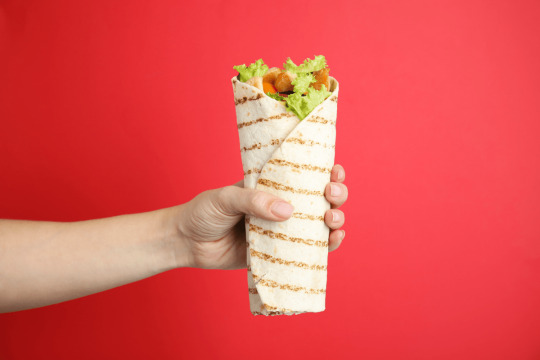
Introduction
Shawarma is a street food in which countries? Shawarma, a mouthwatering street food delight, has transcended its Middle Eastern origins to become a global sensation. Originating in the Levant region, particularly in Lebanon, shawarma's savory and aromatic appeal has captivated taste buds across continents. As the vertical rotisserie turns and the tantalizing aroma of seasoned meat wafts through the air, it's evident that shawarma has become more than just a traditional dish; it's a cultural ambassador, making its mark in countries far and wide.

Lebanon: The Birthplace of Shawarma
Lebanon, with its rich culinary heritage, stands proudly as the birthplace of shawarma. The traditional Lebanese shawarma is a gastronomic masterpiece, often crafted with meticulously seasoned lamb or chicken. The art of preparing shawarma in Lebanon involves marinating the meat with a blend of spices, allowing it to absorb flavors that will later explode in the mouths of eager diners.

Turkey: Döner Kebab and the Culinary Fusion
As the concept of shawarma journeyed beyond Lebanon, it found a significant presence in Turkey, where it is known as "döner kebab." The Turkish adaptation retains the essence of shawarma but introduces its unique twist. Döner kebab is typically made with a combination of seasoned lamb and beef, creating a flavorful harmony. Served with flatbread, vegetables, and a variety of sauces, döner kebab is a staple in Turkish street food culture.
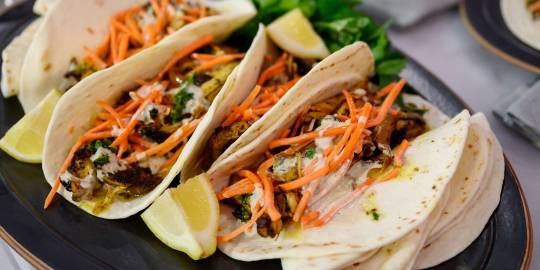
Greece: Gyro, a Mediterranean Delight
In Greece, shawarma takes on the name "gyro," showcasing the Mediterranean flair for combining simplicity with exquisite taste. Gyro is often a mixture of lamb and beef, seasoned to perfection and served in pita bread. Toppings like tomatoes, onions, and a drizzle of tzatziki sauce add a refreshing touch to this Greek street food delight.

Middle Eastern Odyssey: Syria, Jordan, and Iraq
Shawarma's journey continued across the Middle East, finding its place in the culinary hearts of countries like Syria, Jordan, and Iraq. Each region adds its unique touch, whether it's the choice of meat, the blend of spices, or the accompanying sauces. Shawarma in the Middle East is not merely a dish; it's a cultural expression, a testament to the region's diverse flavors and culinary expertise.

Egypt: Shawarma with a Touch of History
In Egypt, shawarma has seamlessly integrated into the local cuisine, offering a delicious blend of history and taste. Commonly made with beef or chicken, Egyptian shawarma is often accompanied by tahini sauce, adding a creamy and nutty dimension to the dish. The streets of Cairo are filled with the enticing aroma of shawarma, inviting locals and tourists alike to savor its delectable charms.

United Arab Emirates: Shawarma in the Modern Desert Oasis
The United Arab Emirates (UAE) has embraced shawarma as a quintessential street food. The bustling streets of cities like Dubai and Abu Dhabi are adorned with shawarma stalls, offering an array of choices, from succulent chicken shawarma to robust beef options. The modern twist on traditional shawarma in the UAE reflects the cosmopolitan nature of these urban hubs.

Israel: Fusion of Flavors in the Promised Land
In Israel, shawarma has become an integral part of the culinary landscape. Known locally as "shawarma," it is often served in a flatbread, accompanied by an assortment of accompaniments such as tahini, fresh vegetables, and pickles. The fusion of flavors in Israeli shawarma is a reflection of the country's diverse cultural influences.
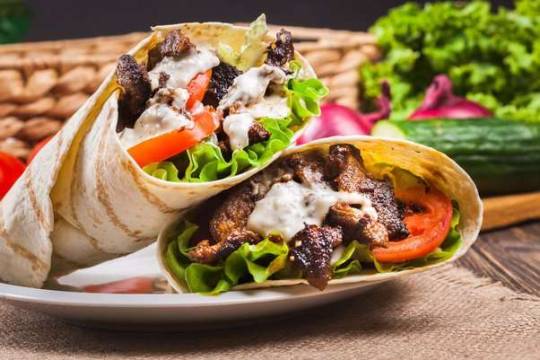
United States and Europe: Shawarma's Global Resonance
Shawarma's popularity has transcended cultural boundaries, reaching the bustling streets of the United States and Europe. American and European cities are now home to numerous shawarma joints, each offering its interpretation of this savory delight. Shawarma in these regions often comes in the form of wraps or sandwiches, catering to the fast-paced lifestyle of urban dwellers.
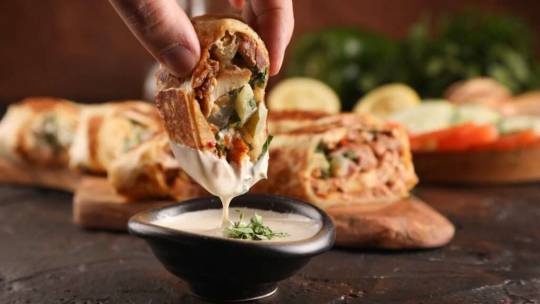
India: Shawarma's Spicy Affair
In India, shawarma has found a spicy home. The Indian version of shawarma is often made with chicken and is renowned for its bold use of spices. Served in flatbreads or wraps, Indian shawarma is accompanied by garlic sauce and pickled vegetables, adding a burst of flavors to each bite. Its popularity in urban centers showcases the country's openness to embracing global culinary trends.

Canada: A Taste of Shawarma in the Great White North
Canada, known for its cultural diversity, has warmly welcomed shawarma into its culinary tapestry. Cities like Toronto, Vancouver, and Montreal boast a vibrant shawarma scene, offering residents and visitors a taste of this global street food phenomenon. The Canadian twist on shawarma often includes variations to suit local tastes, creating a unique fusion of flavors.

Shawarma's Global Appeal: A Culinary Triumph
Shawarma's journey from the narrow streets of Beirut to the bustling avenues of New York City is a testament to its global appeal. This humble street food, with its roots deeply embedded in Middle Eastern traditions, has become a culinary triumph that knows no borders. As shawarma continues to weave its way into the culinary fabric of diverse nations, it reminds us that food is not just sustenance; it's a cultural bridge that brings people together, one delicious bite at a time.
Read the full article
0 notes
Text
#desighiza#recipes#chicken#food#foodie#biryani#calories#drumsticks#howmanycaloriesinoneplateofbiryani#fiction#potatoes#salad#saladlovers
1 note
·
View note
Text
How Many Calories in One Brownie
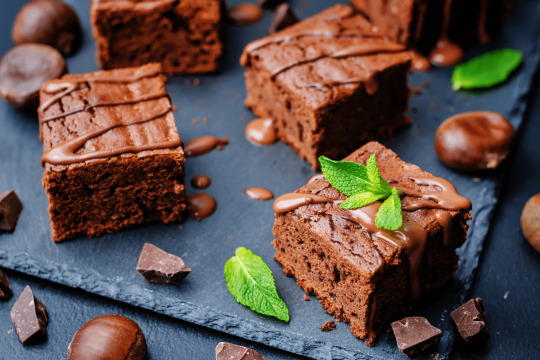
Introduction
how many calories in one brownie? If you're a dessert lover like me, chances are you've indulged in a brownie or two (or maybe even three) in your lifetime. But have you ever stopped to wonder just how many calories are packed into that deliciously decadent treat? Well, look no further because today we're diving into the answer to that very question: how many calories are in one brownie? Get ready to learn the truth about this beloved dessert and how it can fit into your daily calorie intake.
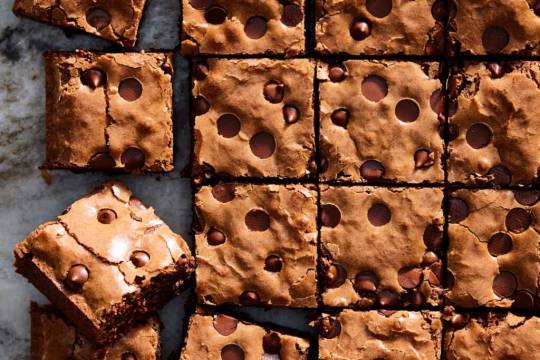
The Science Behind Calorie Counting
Calorie counting is a fundamental concept in understanding our daily food intake and its impact on our bodies. It is rooted in the science of energy balance. Essentially, calories are units of energy, and when we consume more calories than our bodies need, we gain weight. Conversely, when we consume fewer calories than our bodies require, we lose weight. This is the basis of weight management.
The science behind calorie counting involves understanding the caloric content of various macronutrients, such as carbohydrates, proteins, and fats. Each macronutrient has a specific number of calories per gram. Carbohydrates and proteins contain 4 calories per gram, while fats contain 9 calories per gram. By tracking the number of calories consumed from each macronutrient, we can effectively manage our daily caloric intake.
In the context of a brownie, calorie counting allows us to assess the impact of its ingredients on our overall energy consumption. Understanding the science behind calorie counting empowers us to make informed decisions about our food choices and achieve a balanced, healthy lifestyle.
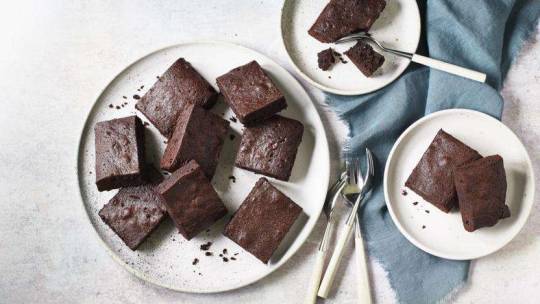
Breaking Down the Ingredients in a Brownie
Let's dive into the delicious world of brownies and break down the key ingredients that make up this irresistible treat. At its core, a traditional brownie is made with butter, sugar, eggs, flour, and chocolate. These ingredients work together to create the rich, fudgy texture and indulgent flavor we all know and love. The butter provides moisture and richness, while the sugar adds sweetness and helps with browning. Eggs act as a binder, holding everything together, while flour gives structure. And of course, the star ingredient, chocolate, brings that deep, decadent taste that makes brownies so irresistible. Understanding the role of each ingredient is essential in appreciating the flavors and calorie content of this beloved dessert. So, let's continue our journey to uncover just how many calories are hiding in one brownie.
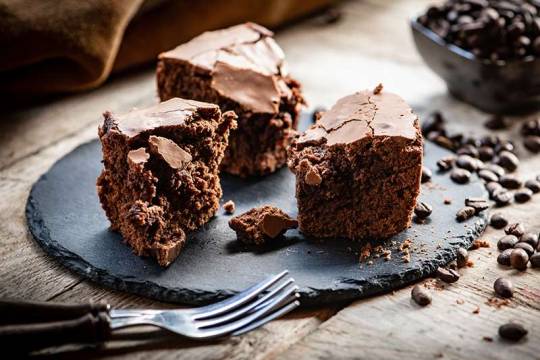
Calories in One Brownie - Unveiling the Truth
Alright, it's time to uncover the truth about how many calories are lurking in one brownie. Brace yourself, because you might be in for a surprise! As we mentioned earlier, a traditional brownie is made with ingredients like butter, sugar, eggs, flour, and chocolate. These delectable treats may taste heavenly, but they do come with a caloric cost.
On average, a single brownie can contain anywhere from 200 to 400 calories. The exact calorie count will depend on the size of the brownie and the specific ingredients used. Keep in mind that larger brownies or those with additional toppings like nuts or frosting can easily surpass the higher end of that range. So if you're watching your calorie intake, it's essential to be mindful of portion sizes and indulge in moderation.
But don't let the calorie count discourage you! Brownies can still be enjoyed as part of a balanced diet. You can make modifications to the recipe to lower the calorie content, such as using applesauce or Greek yogurt as a substitute for butter or reducing the amount of sugar. Experiment with healthier alternatives, like black bean brownies or avocado brownies, to satisfy your sweet tooth without the guilt.
Remember, it's all about balance and making informed choices. Enjoy your brownie, but be mindful of its calorie content and adjust your daily intake accordingly. Indulging in a tasty treat can still be a part of a healthy lifestyle. So go ahead, savor that brownie, and keep up the good work in managing your calorie intake.

Healthier Alternatives for Brownie Lovers
If you're a brownie lover but want to make healthier choices, don't worry! There are plenty of delicious alternatives that can satisfy your sweet tooth without the guilt. One option is to try black bean brownies. Yes, you read that right! Black beans can be a fantastic substitute for butter or oil, adding fiber and reducing the overall calorie content. Another alternative is avocado brownies, which are incredibly fudgy and decadent. Avocado adds creaminess and healthy fats while cutting back on the use of traditional high-calorie ingredients. And if you're looking for a gluten-free option, why not try almond flour brownies? Almond flour adds a nutty flavor and boosts the protein and fiber content. So, if you're looking to indulge in a brownie without compromising your health goals, give these alternatives a try and satisfy your cravings in a more nutritious way.
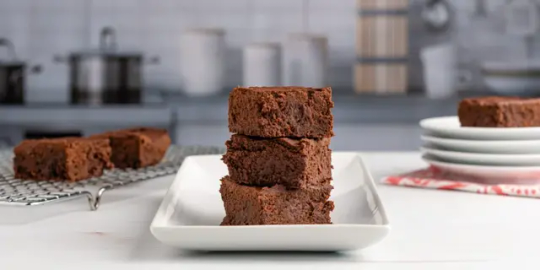
Final Thoughts and Considerations
As we come to the end of our exploration into the calorie content of brownies, it's important to remember that balance is key. Indulging in a delicious treat like a brownie is not a crime, and it shouldn't make you feel guilty. The key is to be mindful of your portion sizes and make informed choices. If you're watching your calorie intake, you can always modify the recipe to make healthier alternatives, like using applesauce or Greek yogurt instead of butter, or reducing the amount of sugar. And don't forget about the exciting options of black bean brownies, avocado brownies, or almond flour brownies for a healthier twist. Ultimately, it's all about enjoying your food while also taking care of your body. So, go ahead, savor that brownie guilt-free, and remember to listen to your body and nourish it with love.
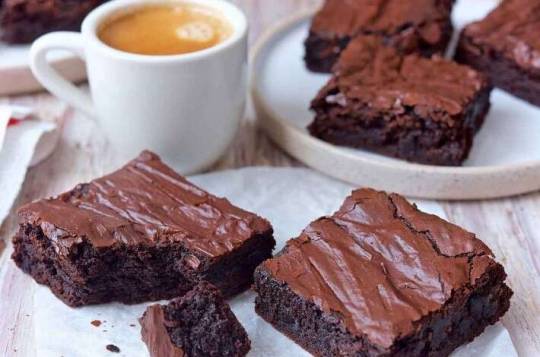
Read the full article
1 note
·
View note
Text
How Many Calories in One Brownie

Introduction
how many calories in one brownie? If you're a dessert lover like me, chances are you've indulged in a brownie or two (or maybe even three) in your lifetime. But have you ever stopped to wonder just how many calories are packed into that deliciously decadent treat? Well, look no further because today we're diving into the answer to that very question: how many calories are in one brownie? Get ready to learn the truth about this beloved dessert and how it can fit into your daily calorie intake.
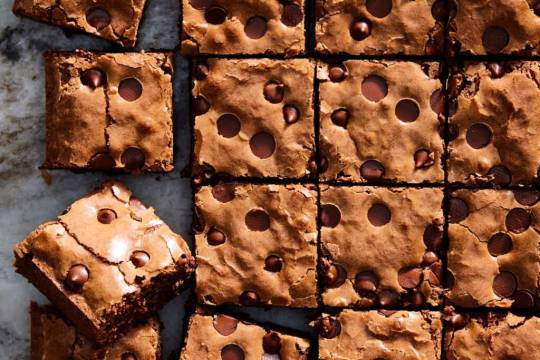
The Science Behind Calorie Counting
Calorie counting is a fundamental concept in understanding our daily food intake and its impact on our bodies. It is rooted in the science of energy balance. Essentially, calories are units of energy, and when we consume more calories than our bodies need, we gain weight. Conversely, when we consume fewer calories than our bodies require, we lose weight. This is the basis of weight management.
The science behind calorie counting involves understanding the caloric content of various macronutrients, such as carbohydrates, proteins, and fats. Each macronutrient has a specific number of calories per gram. Carbohydrates and proteins contain 4 calories per gram, while fats contain 9 calories per gram. By tracking the number of calories consumed from each macronutrient, we can effectively manage our daily caloric intake.
In the context of a brownie, calorie counting allows us to assess the impact of its ingredients on our overall energy consumption. Understanding the science behind calorie counting empowers us to make informed decisions about our food choices and achieve a balanced, healthy lifestyle.

Breaking Down the Ingredients in a Brownie
Let's dive into the delicious world of brownies and break down the key ingredients that make up this irresistible treat. At its core, a traditional brownie is made with butter, sugar, eggs, flour, and chocolate. These ingredients work together to create the rich, fudgy texture and indulgent flavor we all know and love. The butter provides moisture and richness, while the sugar adds sweetness and helps with browning. Eggs act as a binder, holding everything together, while flour gives structure. And of course, the star ingredient, chocolate, brings that deep, decadent taste that makes brownies so irresistible. Understanding the role of each ingredient is essential in appreciating the flavors and calorie content of this beloved dessert. So, let's continue our journey to uncover just how many calories are hiding in one brownie.

Calories in One Brownie - Unveiling the Truth
Alright, it's time to uncover the truth about how many calories are lurking in one brownie. Brace yourself, because you might be in for a surprise! As we mentioned earlier, a traditional brownie is made with ingredients like butter, sugar, eggs, flour, and chocolate. These delectable treats may taste heavenly, but they do come with a caloric cost.
On average, a single brownie can contain anywhere from 200 to 400 calories. The exact calorie count will depend on the size of the brownie and the specific ingredients used. Keep in mind that larger brownies or those with additional toppings like nuts or frosting can easily surpass the higher end of that range. So if you're watching your calorie intake, it's essential to be mindful of portion sizes and indulge in moderation.
But don't let the calorie count discourage you! Brownies can still be enjoyed as part of a balanced diet. You can make modifications to the recipe to lower the calorie content, such as using applesauce or Greek yogurt as a substitute for butter or reducing the amount of sugar. Experiment with healthier alternatives, like black bean brownies or avocado brownies, to satisfy your sweet tooth without the guilt.
Remember, it's all about balance and making informed choices. Enjoy your brownie, but be mindful of its calorie content and adjust your daily intake accordingly. Indulging in a tasty treat can still be a part of a healthy lifestyle. So go ahead, savor that brownie, and keep up the good work in managing your calorie intake.
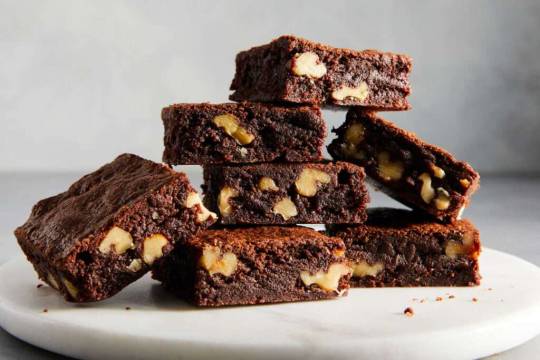
Healthier Alternatives for Brownie Lovers
If you're a brownie lover but want to make healthier choices, don't worry! There are plenty of delicious alternatives that can satisfy your sweet tooth without the guilt. One option is to try black bean brownies. Yes, you read that right! Black beans can be a fantastic substitute for butter or oil, adding fiber and reducing the overall calorie content. Another alternative is avocado brownies, which are incredibly fudgy and decadent. Avocado adds creaminess and healthy fats while cutting back on the use of traditional high-calorie ingredients. And if you're looking for a gluten-free option, why not try almond flour brownies? Almond flour adds a nutty flavor and boosts the protein and fiber content. So, if you're looking to indulge in a brownie without compromising your health goals, give these alternatives a try and satisfy your cravings in a more nutritious way.
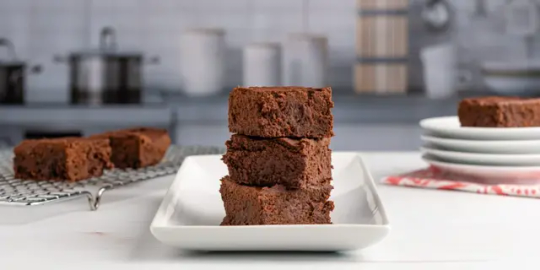
Final Thoughts and Considerations
As we come to the end of our exploration into the calorie content of brownies, it's important to remember that balance is key. Indulging in a delicious treat like a brownie is not a crime, and it shouldn't make you feel guilty. The key is to be mindful of your portion sizes and make informed choices. If you're watching your calorie intake, you can always modify the recipe to make healthier alternatives, like using applesauce or Greek yogurt instead of butter, or reducing the amount of sugar. And don't forget about the exciting options of black bean brownies, avocado brownies, or almond flour brownies for a healthier twist. Ultimately, it's all about enjoying your food while also taking care of your body. So, go ahead, savor that brownie guilt-free, and remember to listen to your body and nourish it with love.
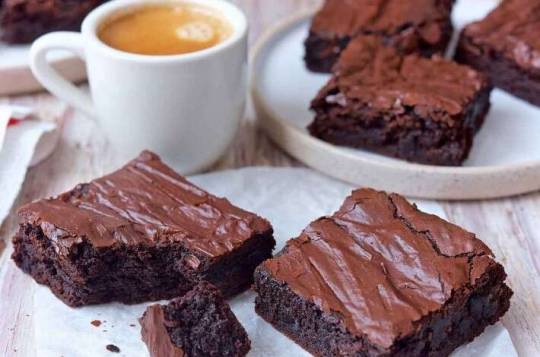
Read the full article
0 notes
Text
Difference Between Junk Food and Fast Food

Difference between junk food and fast food? When it comes to convenience and quick meals, junk food and fast food are often used interchangeably. However, there is a significant difference between these two types of food. While they both may not be the healthiest options, understanding the variations between junk food and fast food can help you make better choices for your overall well-being. In this blog post, we will explore the difference between junk food and fast food and how they affect our bodies.
Defining Junk Food and Fast Food
When it comes to understanding the difference between junk food and fast food, it's important to consider their definitions. Junk food refers to highly processed and low-nutrient foods that are often high in calories, sugar, and unhealthy fats. These foods are typically packaged snacks, candies, and sugary beverages that offer little to no nutritional value. On the other hand, fast food refers to food that is prepared and served quickly, usually at restaurants or drive-thrus. While fast food can also be unhealthy, it encompasses a wider range of options, including burgers, fries, and sandwiches. By understanding these definitions, we can better navigate our choices and make informed decisions about what we eat.

Nutritional Breakdown of Junk Food vs Fast Food
When it comes to comparing the nutritional breakdown of junk food and fast food, it's important to consider their differences. Junk food, with its high levels of calories, sugar, and unhealthy fats, tends to lack nutritional value. On the other hand, fast food encompasses a wider range of options, including burgers, fries, and sandwiches. While fast food can also be unhealthy, it can provide some nutrients like protein and carbohydrates. It's essential to remember that both types of food should be consumed in moderation. By being aware of the nutritional breakdown, we can make more informed decisions about our food choices and strive for a balanced diet.
Health Impacts of Consuming Junk Food and Fast Food
We all know that consuming junk food and fast food isn't the best choice for our health, but what are the actual impacts on our bodies? Well, when it comes to junk food, the excessive calories, sugar, and unhealthy fats can lead to weight gain, high blood pressure, and an increased risk of chronic diseases like heart disease and diabetes. Fast food, on the other hand, can also contribute to weight gain and the development of chronic diseases due to its high levels of sodium, unhealthy fats, and processed ingredients. Both types of food can negatively impact our overall well-being if consumed regularly. It's important to be mindful of our choices and strive for a balanced diet to maintain a healthy lifestyle.
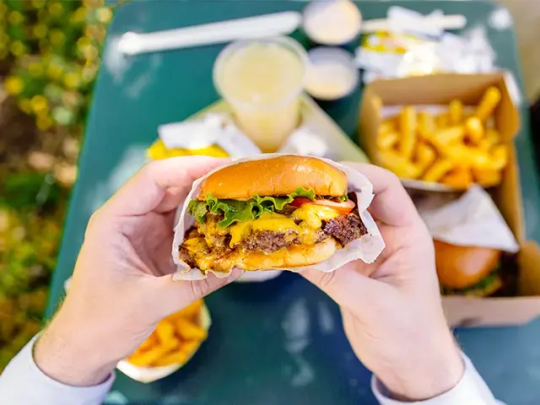
The Role of Marketing and Convenience in the Consumption of Junk Food and Fast Food
Marketing and convenience play significant roles in the consumption of both junk food and fast food. Junk food manufacturers often use strategic marketing tactics to appeal to our cravings and desires, creating addictive products that we can't resist. Their flashy advertisements and packaging make junk food seem appealing and enticing. On the other hand, fast food chains offer quick and easy meals that fit into our busy lifestyles. With drive-thrus and delivery services, fast food becomes the go-to choice when we're short on time or energy to cook. Both marketing and convenience make it difficult to resist the temptation of these unhealthy foods, leading to their widespread consumption.
How to Make Healthier Choices when Eating Fast Food
Making healthier choices when eating fast food doesn't mean you have to completely give it up. There are ways to enjoy fast food while still taking care of your health. Firstly, opt for grilled or baked options instead of fried. Choose smaller portions and skip the sugary drinks, opting for water or unsweetened beverages instead. Pay attention to the toppings and dressings, and choose options with more vegetables and less cheese or mayo. You can also customize your order to remove unhealthy ingredients or ask for a side of veggies instead of fries. By making these small changes, you can still enjoy fast food occasionally without compromising your health.
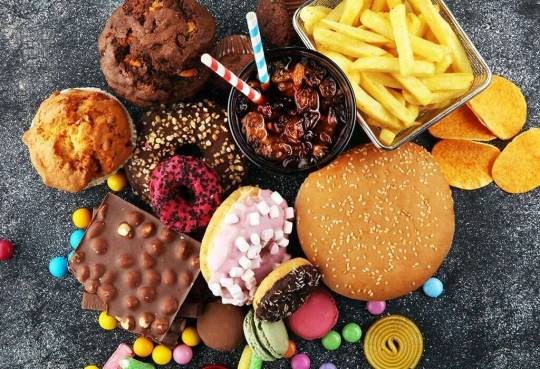
Read the full article
0 notes
Text
How Many Calories in One Plate of Biryani
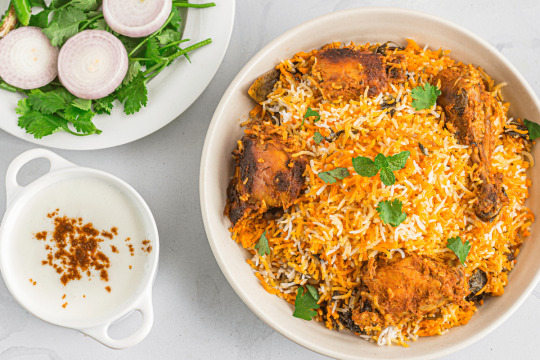
How many calories in one plate of biryani ? Biryani is a popular and delicious dish that originated in the Indian subcontinent. It has gained widespread popularity around the world and can now be found on the menus of many restaurants. However, with its rich and flavorful ingredients, many people wonder just how many calories are in one plate of biryani. Whether you are watching your weight or simply curious about the nutritional value of this dish, in this blog post, we will explore just how many calories are in one plate of biryani and what factors can affect the calorie count. So, let's dig in and find out the truth about this beloved dish.
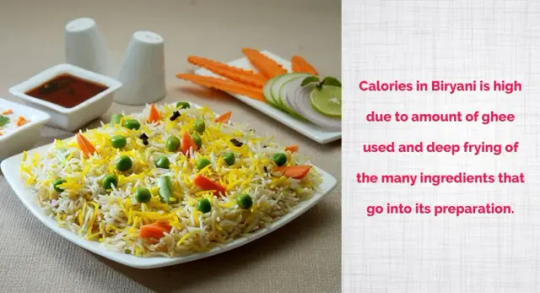
What is Biryani and Its Origins
Biryani is a popular and aromatic dish that has its origins in the Indian subcontinent. It is a flavorful rice dish that is typically made with fragrant long-grain Basmati rice, meat (such as chicken, mutton, or fish), and a variety of spices and herbs. Biryani is believed to have been introduced to the Indian subcontinent by the Mughals, who ruled India in the 16th century. It is said to have evolved from the Persian rice dish called "pilaf," with the addition of Indian spices and flavors. Over time, biryani has become a staple in Indian cuisine and has gained immense popularity worldwide. Its unique blend of flavors and textures makes it a truly delightful and satisfying dish.
Ingredients and Preparation of Biryani
Biryani is a complex dish that requires a variety of ingredients and careful preparation. The key components of biryani include fragrant long-grain Basmati rice, meat (such as chicken, mutton, or fish), and a blend of aromatic spices and herbs. Additional ingredients may include onions, tomatoes, yogurt, and ghee (clarified butter). The preparation process involves marinating the meat, parboiling the rice, and layering the ingredients in a pot. The pot is then sealed and cooked on low heat, allowing the flavors to meld together. The result is a mouthwatering dish that is full of depth and complexity.

Nutritional Breakdown of Biryani
Biryani is not only a delicious dish but also a nutrient-packed one. Let's take a closer look at the nutritional breakdown of biryani. It is a great source of carbohydrates, thanks to the basmati rice, providing energy to keep you going. The meat adds a good amount of protein, essential for muscle repair and growth. The variety of spices and herbs not only enhance the flavor but also offer various health benefits, such as anti-inflammatory properties. While biryani can be calorie-dense due to the addition of ghee and meat, it is also rich in vitamins, minerals, and antioxidants. So, enjoy your plate of biryani, knowing that it offers both taste and nutrition.
How Many Calories are there in One Plate of Biryani?
If you're wondering just how many calories are in one plate of biryani, you're not alone. Biryani is a rich and flavorful dish, so it's natural to be curious about its calorie content. The exact number of calories can vary depending on the ingredients and portion size, but on average, one plate of biryani can contain around 600-800 calories. Keep in mind that this is just an estimate, and the calorie count can be higher or lower depending on the specific recipe. So, if you're watching your calorie intake, it's best to enjoy biryani in moderation or opt for healthier variations.

Factors Affecting the Calorie Count in Biryani
The calorie count in biryani can be affected by several factors. First and foremost, the type and quantity of meat used can significantly impact the calorie content. Chicken and fish tend to be leaner options compared to mutton, which can have higher fat content. Additionally, the amount of oil or ghee used in the cooking process can contribute to the overall calorie count. Other ingredients such as yogurt and ghee also add to the richness of biryani and therefore, its calorie content. Lastly, the portion size plays a crucial role in determining the calorie count, as larger portions will naturally contain more calories. So, when enjoying biryani, be mindful of these factors and make adjustments according to your dietary goals.
Healthier Biryani Variations and Alternatives
Looking to enjoy the flavors of biryani while keeping it healthier? There are several options you can explore. One alternative is to substitute the meat with vegetables or legumes, such as chickpeas or tofu, to add plant-based protein and reduce the calorie content. Another option is to use brown rice instead of white rice, as it contains more fiber and nutrients. Additionally, you can experiment with reducing the amount of oil or ghee used in the cooking process to lower the overall calorie count. By making these small tweaks, you can still savor the deliciousness of biryani while making it a more nutritious choice.
Read the full article
0 notes
Text
How Many Calories in One Plate of Biryani
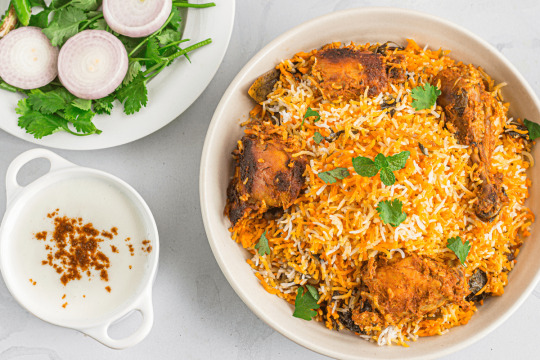
How many calories in one plate of biryani ? Biryani is a popular and delicious dish that originated in the Indian subcontinent. It has gained widespread popularity around the world and can now be found on the menus of many restaurants. However, with its rich and flavorful ingredients, many people wonder just how many calories are in one plate of biryani. Whether you are watching your weight or simply curious about the nutritional value of this dish, in this blog post, we will explore just how many calories are in one plate of biryani and what factors can affect the calorie count. So, let's dig in and find out the truth about this beloved dish.

What is Biryani and Its Origins
Biryani is a popular and aromatic dish that has its origins in the Indian subcontinent. It is a flavorful rice dish that is typically made with fragrant long-grain Basmati rice, meat (such as chicken, mutton, or fish), and a variety of spices and herbs. Biryani is believed to have been introduced to the Indian subcontinent by the Mughals, who ruled India in the 16th century. It is said to have evolved from the Persian rice dish called "pilaf," with the addition of Indian spices and flavors. Over time, biryani has become a staple in Indian cuisine and has gained immense popularity worldwide. Its unique blend of flavors and textures makes it a truly delightful and satisfying dish.
Ingredients and Preparation of Biryani
Biryani is a complex dish that requires a variety of ingredients and careful preparation. The key components of biryani include fragrant long-grain Basmati rice, meat (such as chicken, mutton, or fish), and a blend of aromatic spices and herbs. Additional ingredients may include onions, tomatoes, yogurt, and ghee (clarified butter). The preparation process involves marinating the meat, parboiling the rice, and layering the ingredients in a pot. The pot is then sealed and cooked on low heat, allowing the flavors to meld together. The result is a mouthwatering dish that is full of depth and complexity.
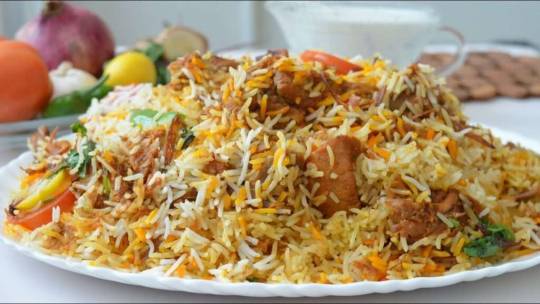
Nutritional Breakdown of Biryani
Biryani is not only a delicious dish but also a nutrient-packed one. Let's take a closer look at the nutritional breakdown of biryani. It is a great source of carbohydrates, thanks to the basmati rice, providing energy to keep you going. The meat adds a good amount of protein, essential for muscle repair and growth. The variety of spices and herbs not only enhance the flavor but also offer various health benefits, such as anti-inflammatory properties. While biryani can be calorie-dense due to the addition of ghee and meat, it is also rich in vitamins, minerals, and antioxidants. So, enjoy your plate of biryani, knowing that it offers both taste and nutrition.
How Many Calories are there in One Plate of Biryani?
If you're wondering just how many calories are in one plate of biryani, you're not alone. Biryani is a rich and flavorful dish, so it's natural to be curious about its calorie content. The exact number of calories can vary depending on the ingredients and portion size, but on average, one plate of biryani can contain around 600-800 calories. Keep in mind that this is just an estimate, and the calorie count can be higher or lower depending on the specific recipe. So, if you're watching your calorie intake, it's best to enjoy biryani in moderation or opt for healthier variations.

Factors Affecting the Calorie Count in Biryani
The calorie count in biryani can be affected by several factors. First and foremost, the type and quantity of meat used can significantly impact the calorie content. Chicken and fish tend to be leaner options compared to mutton, which can have higher fat content. Additionally, the amount of oil or ghee used in the cooking process can contribute to the overall calorie count. Other ingredients such as yogurt and ghee also add to the richness of biryani and therefore, its calorie content. Lastly, the portion size plays a crucial role in determining the calorie count, as larger portions will naturally contain more calories. So, when enjoying biryani, be mindful of these factors and make adjustments according to your dietary goals.
Healthier Biryani Variations and Alternatives
Looking to enjoy the flavors of biryani while keeping it healthier? There are several options you can explore. One alternative is to substitute the meat with vegetables or legumes, such as chickpeas or tofu, to add plant-based protein and reduce the calorie content. Another option is to use brown rice instead of white rice, as it contains more fiber and nutrients. Additionally, you can experiment with reducing the amount of oil or ghee used in the cooking process to lower the overall calorie count. By making these small tweaks, you can still savor the deliciousness of biryani while making it a more nutritious choice.
Read the full article
0 notes
Text
How Many Calories in One Plate of Biryani
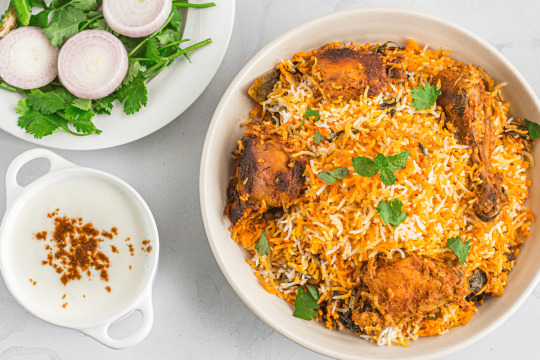
How many calories in one plate of biryani ? Biryani is a popular and delicious dish that originated in the Indian subcontinent. It has gained widespread popularity around the world and can now be found on the menus of many restaurants. However, with its rich and flavorful ingredients, many people wonder just how many calories are in one plate of biryani. Whether you are watching your weight or simply curious about the nutritional value of this dish, in this blog post, we will explore just how many calories are in one plate of biryani and what factors can affect the calorie count. So, let's dig in and find out the truth about this beloved dish.

What is Biryani and Its Origins
Biryani is a popular and aromatic dish that has its origins in the Indian subcontinent. It is a flavorful rice dish that is typically made with fragrant long-grain Basmati rice, meat (such as chicken, mutton, or fish), and a variety of spices and herbs. Biryani is believed to have been introduced to the Indian subcontinent by the Mughals, who ruled India in the 16th century. It is said to have evolved from the Persian rice dish called "pilaf," with the addition of Indian spices and flavors. Over time, biryani has become a staple in Indian cuisine and has gained immense popularity worldwide. Its unique blend of flavors and textures makes it a truly delightful and satisfying dish.
Ingredients and Preparation of Biryani
Biryani is a complex dish that requires a variety of ingredients and careful preparation. The key components of biryani include fragrant long-grain Basmati rice, meat (such as chicken, mutton, or fish), and a blend of aromatic spices and herbs. Additional ingredients may include onions, tomatoes, yogurt, and ghee (clarified butter). The preparation process involves marinating the meat, parboiling the rice, and layering the ingredients in a pot. The pot is then sealed and cooked on low heat, allowing the flavors to meld together. The result is a mouthwatering dish that is full of depth and complexity.

Nutritional Breakdown of Biryani
Biryani is not only a delicious dish but also a nutrient-packed one. Let's take a closer look at the nutritional breakdown of biryani. It is a great source of carbohydrates, thanks to the basmati rice, providing energy to keep you going. The meat adds a good amount of protein, essential for muscle repair and growth. The variety of spices and herbs not only enhance the flavor but also offer various health benefits, such as anti-inflammatory properties. While biryani can be calorie-dense due to the addition of ghee and meat, it is also rich in vitamins, minerals, and antioxidants. So, enjoy your plate of biryani, knowing that it offers both taste and nutrition.
How Many Calories are there in One Plate of Biryani?
If you're wondering just how many calories are in one plate of biryani, you're not alone. Biryani is a rich and flavorful dish, so it's natural to be curious about its calorie content. The exact number of calories can vary depending on the ingredients and portion size, but on average, one plate of biryani can contain around 600-800 calories. Keep in mind that this is just an estimate, and the calorie count can be higher or lower depending on the specific recipe. So, if you're watching your calorie intake, it's best to enjoy biryani in moderation or opt for healthier variations.
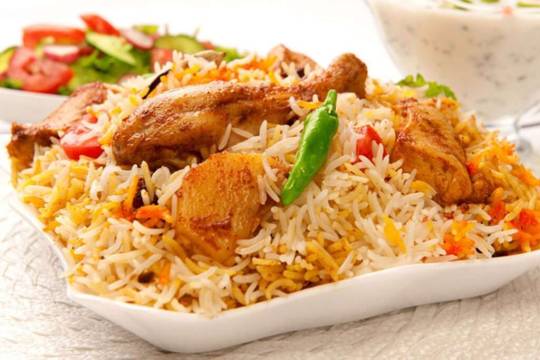
Factors Affecting the Calorie Count in Biryani
The calorie count in biryani can be affected by several factors. First and foremost, the type and quantity of meat used can significantly impact the calorie content. Chicken and fish tend to be leaner options compared to mutton, which can have higher fat content. Additionally, the amount of oil or ghee used in the cooking process can contribute to the overall calorie count. Other ingredients such as yogurt and ghee also add to the richness of biryani and therefore, its calorie content. Lastly, the portion size plays a crucial role in determining the calorie count, as larger portions will naturally contain more calories. So, when enjoying biryani, be mindful of these factors and make adjustments according to your dietary goals.
Healthier Biryani Variations and Alternatives
Looking to enjoy the flavors of biryani while keeping it healthier? There are several options you can explore. One alternative is to substitute the meat with vegetables or legumes, such as chickpeas or tofu, to add plant-based protein and reduce the calorie content. Another option is to use brown rice instead of white rice, as it contains more fiber and nutrients. Additionally, you can experiment with reducing the amount of oil or ghee used in the cooking process to lower the overall calorie count. By making these small tweaks, you can still savor the deliciousness of biryani while making it a more nutritious choice.
Read the full article
0 notes
Text
3 notes
·
View notes
Text
How Long Do Magic Mushrooms Stay in Your System
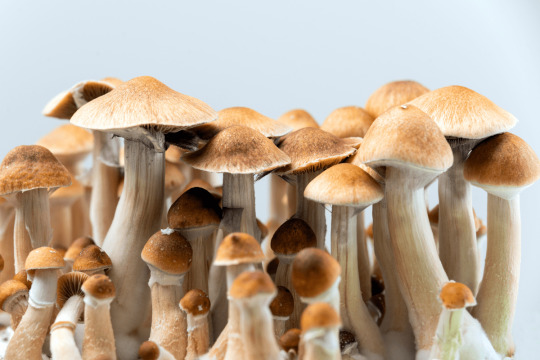
In the realm of psychedelic exploration, magic mushrooms have captivated the curious minds seeking profound experiences. As the allure of these fungi grows, so does the quest for understanding their impact on the human body. This SEO-optimized long-form article delves into the question: How long do magic mushrooms stay in your system ?
1. Introducing the Enigma
Decoding Psilocybin and Psilocin
Magic mushrooms, scientifically known as psilocybin mushrooms, contain compounds such as psilocybin and psilocin, which induce hallucinogenic effects. Users often embark on a journey of altered perceptions and expanded consciousness, but the lingering question remains: How long do these compounds linger in the body?
Exploring Different Strains
It's essential to note that various strains of magic mushrooms may exhibit slightly different metabolization rates. Strains like Golden Teacher or Mexican Cubensis could potentially have distinct durations in the body.
2. The Timeline
Short-Term Effects
Upon ingestion, magic mushrooms typically induce effects within 20 to 40 minutes. Users experience a peak within 2 hours, followed by a gradual descent. However, the immediate effects do not directly correlate with the duration of their presence in the body.
Metabolization and Elimination
The body processes psilocybin into psilocin, and the liver further metabolizes these compounds. The elimination half-life of psilocin is roughly 50 minutes to 3 hours, but traces of its metabolites can be detectable in the body for a more extended period.

3. Factors Influencing Duration
Dosage Matters
The amount of magic mushrooms consumed plays a crucial role. Higher doses result in more pronounced effects and an extended duration of presence in the system.
Individual Variations
Metabolism varies among individuals. Factors like age, weight, liver function, and overall health contribute to the speed at which the body processes and eliminates these compounds.
4. Drug Tests and Detection
Urinalysis
Psilocin and its metabolites can be detectable in urine for up to 24 hours, sometimes longer, depending on factors like dosage and individual metabolism.
Hair Follicle Tests
Hair follicle tests have a more extended detection window, potentially revealing magic mushroom use for up to 90 days or even more.
Conclusion: How Long Do Magic Mushrooms Stay in Your System
In conclusion, the duration of magic mushrooms in your system is a complex interplay of various factors. While the immediate effects may wane after a few hours, traces of psilocin and its metabolites can linger for an extended period. Understanding these timelines is crucial for those subject to drug tests or seeking to manage their psychedelic experiences responsibly.
Frequently Asked Questions (FAQs)
1. Can magic mushrooms be detected in blood tests?
- While blood tests can detect psilocin shortly after ingestion, the window for detection is relatively short, usually within a few hours.
2. Do factors like hydration or diet affect the duration of magic mushrooms in the system?
- Hydration and diet may influence the speed of metabolism, potentially affecting the duration of magic mushrooms in the system. However, comprehensive studies on these specific factors are limited.
3. Can prolonged use of magic mushrooms lead to long-term traces in the body?
- Prolonged use may lead to the accumulation of metabolites, potentially extending the detection window in hair follicle tests. However, research on the long-term impacts of magic mushroom use is still evolving.
Read the full article
0 notes